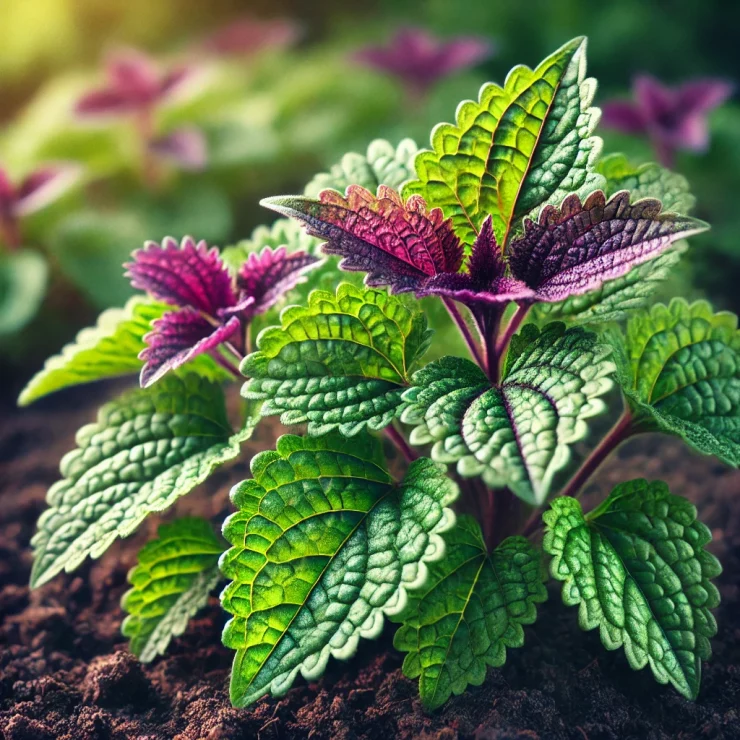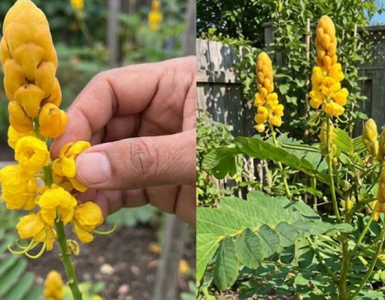Shiso, also known as perilla, is a flavorful herb popular in Japanese, Korean, and Chinese cuisines. Its unique flavor profile, combining hints of mint, basil, and cinnamon, makes it a versatile addition to a variety of dishes. Beyond its culinary appeal, shiso is easy to grow and can thrive in both gardens and containers, making it a great choice for home gardeners looking to expand their herb collection.
In this article, we’ll explore how to grow shiso, the benefits of adding it to your garden, and how to use it in your kitchen.
1.Why Grow Shiso?
Shiso is a versatile herb with many uses in the kitchen. Its vibrant green or deep purple leaves can be used fresh in salads, as a garnish, or as a flavoring in soups, sushi, and marinades. It’s not only delicious but also packed with nutrients, including vitamins A and C, calcium, and iron. In addition to its culinary value, shiso is an ornamental plant that adds beauty to your garden with its striking foliage.
Benefits of Growing Shiso:
Unique flavor: Shiso’s distinct taste adds a refreshing twist to many dishes.
Nutrient-rich: Shiso is packed with vitamins and antioxidants.
Easy to grow: Shiso is a hardy plant that can be grown in various conditions.
Ornamental: The green or purple leaves can add color and texture to your garden.
2.Types of Shiso
There are two main types of shiso that you can grow in your garden:
Green Shiso (Aojiso): This is the most common variety, known for its vibrant green leaves and slightly spicy, citrusy flavor. Green shiso is often used in salads, as a wrap for sushi, or chopped into sauces and dressings.
Red or Purple Shiso (Akajiso): This variety has deep purple leaves with a more robust, earthy flavor. Red shiso is often used in pickling, especially in making umeboshi (Japanese pickled plums), and as a natural food coloring.
Both varieties are highly aromatic and can be used fresh, dried, or even pickled, adding unique flavors to your dishes.
3.How to Grow Shiso
Shiso is relatively easy to grow and can thrive in both garden beds and containers. Here’s how to successfully grow shiso in your garden:
Choose the Right Location
Shiso prefers full sun but can tolerate partial shade. Choose a spot in your garden that gets at least 4-6 hours of sunlight daily. The plant also prefers well-draining, nutrient-rich soil.
Planting Shiso Seeds
Sow the seeds: Start shiso seeds indoors about 6-8 weeks before the last frost date, or sow them directly into the garden once the danger of frost has passed. Scatter the seeds lightly on the soil surface and cover them with a thin layer of soil.
Temperature: Shiso seeds need warm soil to germinate (about 70°F). Use a seedling heat mat if starting indoors to help with germination.
Watering: Keep the soil moist but not waterlogged. Shiso plants don’t like overly wet soil, so ensure good drainage.
Transplanting and Spacing
Once your shiso seedlings are about 2-3 inches tall, transplant them into the garden or larger containers. Space the plants about 12-18 inches apart to give them room to grow. Shiso can grow up to 3 feet tall and bushy, so adequate spacing is important.
Caring for Shiso
Watering: Shiso prefers consistent moisture, so water it regularly, especially during dry spells. Be careful not to overwater, as this can lead to root rot.
Fertilizing: Feed your shiso with a balanced, organic fertilizer every 3-4 weeks to encourage healthy growth.
Pruning: Pinch off the tips of the plant regularly to encourage bushier growth and prevent the plant from going to seed too early.
Harvesting Shiso
You can begin harvesting shiso leaves once the plant is about 6-8 inches tall. Simply pinch off the leaves as needed, but avoid stripping the plant of all its foliage at once. Shiso will continue to grow and produce leaves throughout the summer if harvested regularly.
4.Using Shiso in the Kitchen
Shiso’s versatility in the kitchen is one of the reasons it’s so beloved in many Asian cuisines. Whether you’re using green or red shiso, the possibilities are endless.
Culinary Uses:
Fresh in salads: Shiso leaves add a refreshing burst of flavor to mixed green salads.
Garnish: Use whole or chopped shiso leaves as a garnish for sushi, sashimi, or grilled fish.
Pickled: Red shiso is often used in pickling, especially in making umeboshi or pickled cucumbers.
Wraps: Shiso can be used as a wrap for rice, sushi, or grilled meats, adding an extra layer of flavor.
Infused beverages: Red shiso can be steeped to make a refreshing tea or used as a flavoring in cocktails and mocktails.
5.Shiso’s Health Benefits
In addition to its culinary versatility, shiso offers several health benefits. It’s rich in vitamins, minerals, and antioxidants, making it a great addition to a healthy diet.
Health Benefits:
Rich in antioxidants: Shiso contains rosmarinic acid and other antioxidants that help protect the body from oxidative stress.
Anti-inflammatory: Shiso has natural anti-inflammatory properties that may help reduce symptoms of allergies and inflammation.
Supports respiratory health: Shiso is traditionally used in herbal remedies to soothe respiratory issues such as asthma and coughs.
6.Companion Planting with Shiso
Shiso can also be a beneficial companion plant in your garden. Its strong scent helps repel pests like aphids and cabbage moths, making it a good neighbor for vegetables like cabbage, broccoli, and tomatoes. Shiso can also attract beneficial pollinators like bees, which can improve the overall health and productivity of your garden.
Growing shiso in your garden not only adds a unique and delicious herb to your culinary repertoire but also provides several health and pest-repelling benefits. Whether you’re planting it for its striking ornamental value, its refreshing flavor, or its medicinal properties, shiso is a wonderful addition to any herb garden. With minimal care, you can enjoy this aromatic and versatile herb throughout the growing season.






Add comment